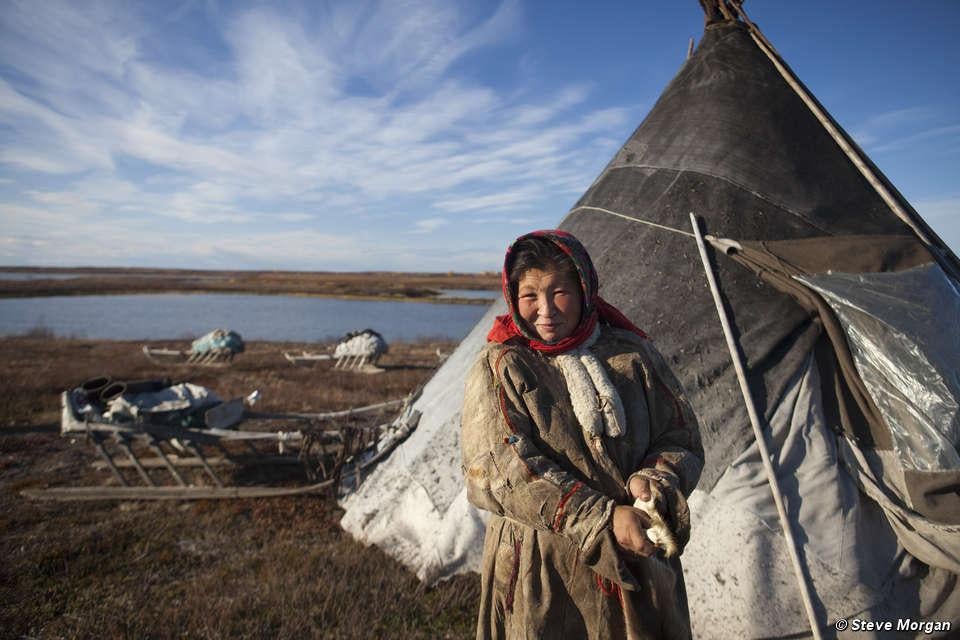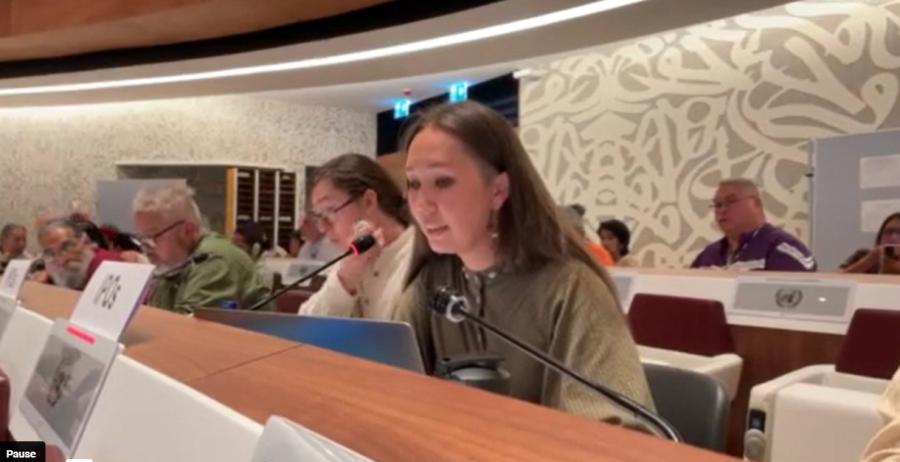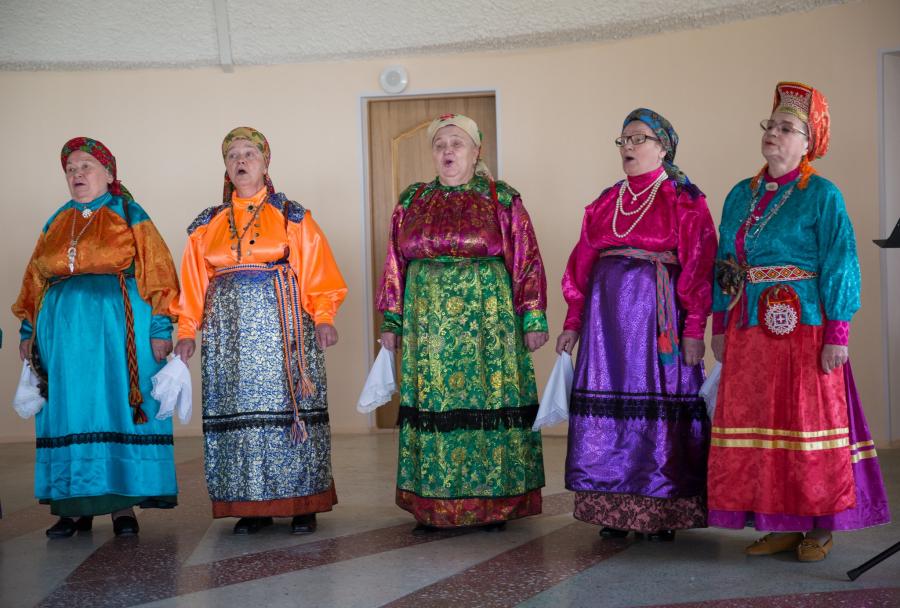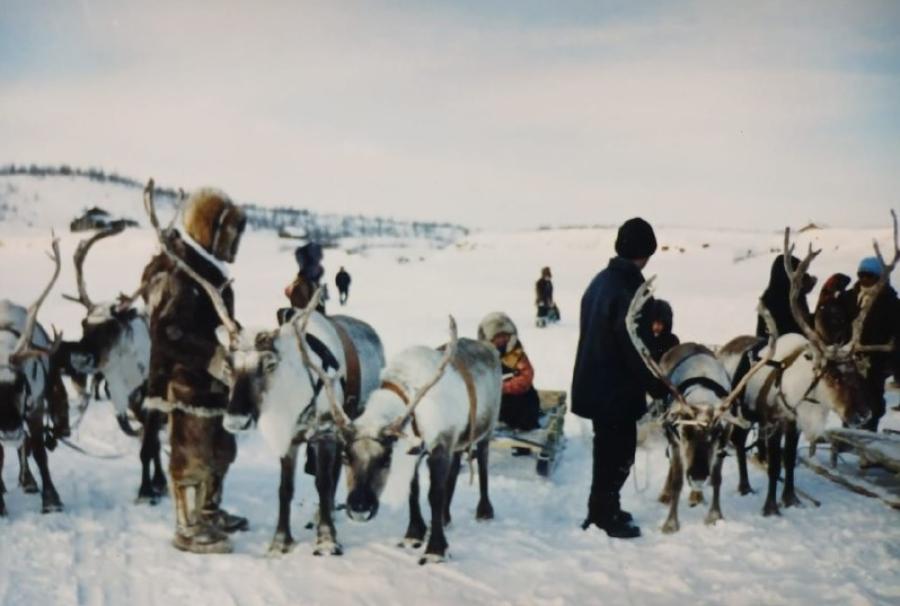
“We, the Indigenous Peoples of the North, Siberia, and Far East of the Russian Federation, believe that the Air, the Land, and Water are blessed; Nature is the source of life, Man is but a drop in the whirlpool of life; The river of time is but a reflection of the past, present, and future and that how our ancestors lived in the past is how we now live and how our offspring will live in the future.”-RAIPON Charter
For the past couple of weeks, all eyes have been on Russia – on the preparations for the Olympics, on the allegations of human rights violations, and on the infamous awkward toilet arrangements. Let’s take a quick break from tweets of disastrous hotel rooms to examine a population that is often overlooked in Russia – the Indigenous peoples.
There are over 100 identified ethnic groups in Russia. Of them, 41 are legally recognized as “Indigenous small-numbered peoples of the North, Siberia, and the Far East.” These are the only groups that are legally protected as Indigenous peoples; to meet the requirements, a group of peoples must number fewer than 50,000 people, maintain a traditional way of life, inhabit certain remote areas of the country, and identify as a distinct ethnic group. Some groups are disqualified because of their larger populations, such as the Sakha (Yakuts), Buryat, Komi, and Khakas; others are currently striving to get recognition. Additionally, there are 24 larger ethnic groups that are identified as national identities or titular nations. These groups inhabit independent states or autonomous areas in Russia, but do not have specific protections under the law.
The smallest of these Indigenous groups are the Enets (350 people) and the Oroks (450 people), while the largest are the Nenets and Evenkis, which both have nearly 30,000 members. Of the 41 peoples, ten have fewer than 1,000 members and eleven live beyond the Arctic Circle. At least 16 of these peoples have such small populations that they are considered to be endangered; at least eleven have been declared extinct. Though Russia’s Indigenous peoples only make up 0.2% of the total population, or 250,000 people total, they inhabit about 2/3 of Russia’s territory.
The Indigenous peoples of Russia are so varied and diverse that it would be a disservice to try and provide a cultural overview. They do have some characteristics in common: many are nomadic or seminomadic, practice animism, and have lifestyles based on hunting, gathering, fishing, and reindeer herding. In many of these groups, an adherence to traditional lifestyle has become even more important since the collapse of the Soviet economy. The languages of the Indigenous groups of Russia are numerous, but most of them belong to one of three main ethno-linguistic groups: Uralic, Altaic, and Paleo-Siberian. We highly encourage you to look into the amazing cultures of the individual tribes – this website provides a great starting point with introductions to each group.
Unfortunately, the Indigenous peoples of Russia also share many common problems. Russia has not ratified ILO Convention 169. Though Indigenous Peoples are protected under Article 69 of the Russian Constitution, the implementation of protective laws and regulations are often not adequately enforced or are complicated by government decisions regarding natural resource use in the North. There are currently 70 places of potential conflict between local groups and extractive projects – for example, nickel mining has intruded on many reindeer pastures and sacred sites. In November 2011, the Committee of the Federation Council on Northern Affairs and Affairs of Indigenous Small-Numbered Peoples, the only federal legislation body specializing in Indigenous Affairs, was dissolved, along with several regional specialized government bodies. In July 2012, Russia passed a law designating non-profits that accept foreign funding and participate in “political” activities such as Indigenous rights as “foreign agents,” subjecting many Indigenous organizing groups to more legal obligations and stigmatization. In November 2012, the government suspended the activities of the Russian Association of Indigenous Peoples of the North (RAIPON). Founded in 1990, RAIPON represents 42 Indigenous groups in Russia and is a permanent member of the crucial Arctic Council.
In 2001 the government adopted a law “On the Territories of Traditional Nature Use,” the only serious attempt to ensure Indigenous Peoples land-use rights to the land on which they depend for subsistence. However, since the law has gone into effect not a single Territory of Traditional Nature Use (TTNU) has been established. Many Indigenous groups also suffer from insufficient fishing rights – in 2008 an amendment to federal law removed provisions of priority for access to fishing grounds for Indigenous peoples, and stipulated that Indigenous peoples may only fish for their personal needs. This excludes obshchinas, or Indigenous cooperatives – in many territories, the largest providers of income and employment for Indigenous peoples. There are over 2,300 obshchinas across Russia. It is also very difficult for nomadic fishers to obtain licenses, and they face heavy fines for fishing without a license.
These problems only make currently existing problems with unemployment and poverty worse. Unemployment in Indigenous populations is 1.5-2 times higher than in the general Russian population, and incomes are 2-3 times lower. Indigenous peoples suffer from a lack of clean drinking water, inadequate food, and insufficient drinking water. These problems contribute to numerous health problems such as tuberculosis, viral hepatitis, intestinal infections, upper respiratory infections, and alcoholism. In the Indigenous communities of Russia, tuberculosis (TB), a health problem that is virtually nonexistent in developed nations, occurs at a rate of 3 times the national average. Maternal and child mortality is much higher in Indigenous territories – in some territories, the mortality rate is several times higher than the birth rate. Because of these issues, life expectancy for Indigenous peoples is much shorter than the already relatively short Russian life expectancy – 50 years for men and 60 years for women, compared to 64 years for men and 70 years for women in the general Russian population.
The Indigenous peoples of Russia also face many threats to their traditional cultures. For example, today only 10% of Siberia’s tribal people live a nomadic or semi-nomadic lifestyle, compared to 70% about 30 years ago. Since 2002, the population of 24 of the Russian Indigenous groups has declined, with only 10 increasing in membership. This is due primarily to a decline in self-identification with the tribe as well as assimilation with the Russian population. 90% of the population of Northern Russia has migrated there within the past two centuries, and patterns of forced promotion of the Russian language and culture have eroded many of the smaller Indigenous cultures. The proliferation of Russian-language public schools and boarding schools and mass media such as newspapers, television, and radio produced in Russia has threatened Indigenous languages – there are now 148 endangered languages in Russia.
The problems facing the Indigenous peoples of Russian are severe – but so is the will and resolve of the people. Having already survived incredible hardships – both environmental and political – the Russian Indigenous peoples evidently find great strength in their ancestors, culture, and ability to be both resilient and adaptive. Perhaps now, with the world turned towards Russia, is a good time for the rest of us to lend some support.



